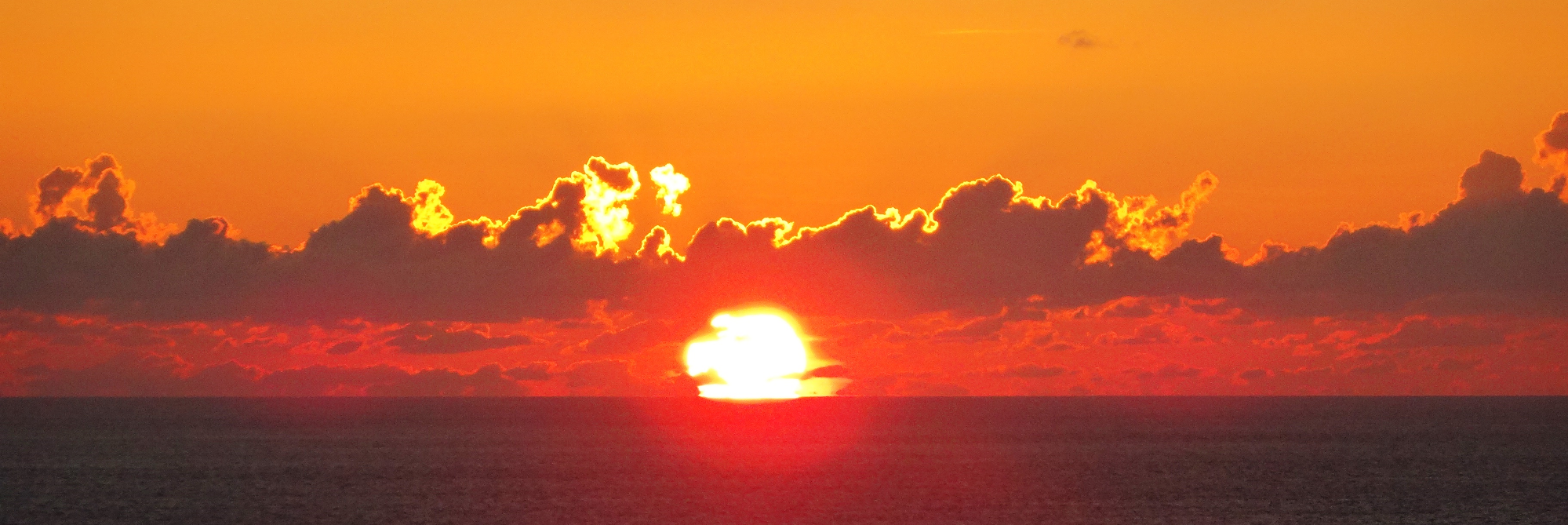
australia
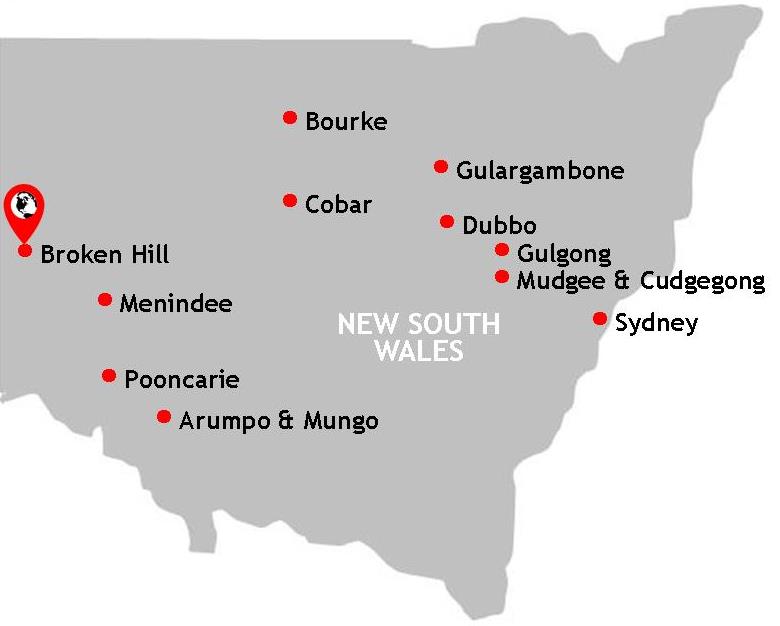
Where: Katoomba, Cudgegong, Mudgee, Gulgong, Dubbo, Walgett, Gulargambone, Bourke, Cobar, Menindee, Pooncarie, Broken Hill, Arumpo & Mungo. New South Wales, Australia.
When: July 2020
What: Three Sisters, Lake Windamere, Wild West architecture, golliwog, quirky roadside postboxes, 'Big Things', Darling River, silo art, Outback red soil, standing in two time zones simultaneously, Menindee Lake, Pamamaroo Lake, Great Walls of China lunettes, stargazing at the Milky Way, walking on giant sand dunes.
How: Hire car, regional airline.
Wildlife spotting: kangaroos, kookaburras, emus, grasshopper, pelican, galahs, pink cockatoo, sulphur-crested cockatoo.
Mishaps or illnesses: breaking my glasses; forgetting my photo ID for the return flight and having to beg the regional airline to let me board; a number of close shaves driving on unsealed roads and dry lake beds; a close encounter with a nest of giant Carpenter ants; three hour flight delay.
The lion's share of New South Wales' development and infrastructure clings stubbornly to the eastern coastline meaning that there's a whole 'other Australia' waiting to be explored. Indeed, it must be explored. This is an ancient part of Australia known enigmatically as 'The Outback'. Its wide brown vistas punctuated by scorched trees, dusty red deserts, feral camels a-roaming, tin roofed shacks and empty roads stretching out into the horizon as far as the eye can see, are now the stuff of legend - and the part I consider to be true heart of Australia. Travelling through The Outback is an opportunity to experience Australia at its most ancient - a chance to taste and savour an Australia that might have existed before European settlement: that is, Australia BC. Australia Before Cook.
Hitting the open road is a quintessentially Aussie thing to do, Australia being, as it is, a land characterised by vast distances and incredible landscapes. Jumping in a car and heading somewhere - anywhere - is the archetypal and truest of adventures; heading into the unknown with the tantalising prospect of pulling over whenever the mood takes you. This unrestrained freedom is one I seldom associate with air travel. Indeed, in my eyes flying will always come second place to a road trip because a road trip positively demands that you interact with the landscape you're journeying through. Fly over the top of it and you'll deny yourself the smells, the sounds, the sights and the physical sensations of travelling through rather than over. It's travel cliché but, as far as a road trip through the Aussie Outback is concerned, the journey really is the destination.
Still reminiscing about my time in the Northern Territory where I experienced this 'other Australia', and with the global pandemic closing not only international borders but also those between Australian states, now felt like an opportune moment to explore part of my own back yard far inland and far away from the banality of the State capital Sydney, whose iconic Opera House increasingly feels un-Australian to me (the fact that it only dates from the 1970s and was designed by a Dutchman - who then fled out of frustration - compounds my growing ambivalence toward it). Shackled to the State capital for employment reasons, I'm always in search of an opportunity to experience a more authentic Australia, one removed from the corporate architecture of the city. And so, my journey through The Outback is simultaneously a journey to find the true heart and soul of Australia. I believe both can be found in the weather-worn faces of Outback folks, in the blood red dust whipped up by yet another volley of wind skipping over the open plains, in the earthy organic paintings of Indigenous Australians, in its boomerangs and didgeridoos and in its unique and enigmatic creatures which roam wild and untamed by man.
Our journey north westward, with an obligatory stop at Katoomba to see the Three Sisters, was punctuated by lumpy bumpy green hills which looked not unlike dollops of green ice cream. As we pressed west, the colour of the landscape slowly changed from beige to intense reds; the move from beige to red symbolic of the transition from one type of Australia to another: from Country to Outback. Evocatively the radio station, ABC NSW, took to crackling in and out as we motored along roads with virtually no other cars on them. Predictably, there was the occasional wallaby or kangaroo slumped dead by the roadside. Occasionally there was a quirky roadside post box which demanded photographing. Regularly a roadside sign would herald our arrival in a new shire, town or region of the State ("Welcome to the Mid-West", "Welcome to Outback NSW", "Welcome to Bourke: Gateway to the Real Outback").
A mere 270 kilometres westward of Sydney lies the Country town of Mudgee, whose name derived from Wiradjuri means "nest in the hills'. A trip to Mudgee is a trip to an Australia I've heard referenced in more conversations than I care to remember. It holds a very special place in the Australian consciousness. I've lived here long enough to know that anyone who heralds from "a Country Town" professes this whenever the conversation permits. It's often an admission which, to me at least, sounds part proud declaration, part confession. The country town has an ambivalence about it, speaking simultaneously of honesty and hospitality but also hardship (or "doing it tough" as they say here) and resilience. It's a place of rust, vineyards and the Aussiest of Aussie architecture.
Gulgong was an unplanned detour on our way from Mudgee to Dubbo but was an undisputed highlight of the trip. Gulgong, whose name means "deep waterhole" in Wiradjuri, offered a step back in time and, seemingly, a step back into the United States' Wild West. This little treasure of a gold mining town's streets are lined with heritage-listed buildings featuring wooden verandas, vaulted frontages and iron lace balconies. Gulgong is straight out of central casting for a Hollywood Western. A cowboy-toting gunslinger could have walked down the centre of Mayne Street at Noon and I wouldn't have considered him in any way out of place. We stopped for a refresh at the Butcher Shop Cafe for a coffee and banana bread and I couldn't help but notice that the door, quite fittingly, swung on a double hinge like a saloon door in a John Wayne film. Over coffee we pondered and mused how Gulgong wasn't making the most of itself to bring in the tourists. With just a little bit more tidying up and a few tourist friendly changes, Gulgong could be a beacon for travellers looking for a glimpse into Australia's past. But, of course, doing so would kill off that which makes Gulgong special: its authenticity. Its grumpy old man shouting "I ain't a performing monkey" at me as I took a photograph, its sheep tied up in a local street, its abandoned shops and its friendly old ladies offering directions even though you are not lost are all authentic and, for that reason, Gulgong should be cherished just as it is. Gulgong was a world away from Sydney. Thankfully.
Dubbo is the last big city before you hit the Outback. After Gulgong, Dubbo was thoroughly disappointing. Indeed, there was little to draw my eye during our walk up and down the main thoroughfare. Many of the familiar Australian stores were here, but appeared faded compared to their state capital counterparts. A main hub in the Central West, Dubbo is as good a place as any to pull over for an overnight stay with accommodation options plentiful. I took comfort in the knowledge that I'd be leaving this kind of place behind and that we'd be heading somewhere far more off the beaten track the next day: Bourke (pronounced "Burke").
Bourke has forever been immortalised in the Aussie phrase, "Back of Bourke", which roughly translates as "middle of nowhere" or "back of beyond". The welcome sign along the road declares that Bourke is the "Gateway to the Real Outback", with the word 'real' no doubt a euphemism for rough, no frills, expect no luxury here. We arrived at dusk, completely exhausted and famished, having made the gruelling seven hour drive from Dubbo. Staying overnight in the back of beyond I lowered my expectations significantly when it came to the town's potential culinary offerings. We opted for a small restaurant-cum-pub-cum-working men's club with a random assortment of mismatched furniture, a display of military heroes in one corner and a large television set mounted on the wall on another which took to playing public information ads imploring Indigenous Australians to get tested for scabies. The latter made it all the more difficult to down my Flathead and chips. Bourke felt like a frontier town; the tarmac of the road transitioned abruptly into a sandy sidewalk; lights and cables dangled on power poles leaning at impressive angles; entire streets were lined with fencing made from battered and rusty corrugated metal, cutting the kind of scene you might expect to see in a documentary about and impoverished third world city somewhere in another land far, far away. In places Bourke took on the semblance of a shanty town, with dogs barking wild-wise and dust being whipped up from the ground in playful eddies. This was Australia. And I now understood the phrase Back o' Bourke. I was thankful that we had apportioned only a single night here and, having satisfied ourselves with a walk down to the Darling River to catch the last of the daylight on this most famed of Aussie waterways, we collapsed into bed in one of the only accommodation options in town: the Bourke Riverside Motel. It declared itself to be a "AAA ****" establishment, although the faulty air-con unit, barking dogs outside and three centimetre gap underneath the door begged to differ. The poet Henry Lawson is oft quoted as saying, "If you know Bourke, you know Australia". After staying here for less than twenty four hours I can hardly claim to "know Bourke". In fact, having lived on this giant continent for just a few days shy of four years now, I can hardly claim to "know Australia", either. I thus left Bourke more confused than ever. Still, despite its namesake being used frequently in conversation, Bourke is a place to which most people do not venture, thus helping me to feel at least a little intrepid on this trip. The next day we would press on to Broken Hill, a town on the very edge of the State and so far west we would actually change time zones. It would be a long drive...
Broken Hill is so far west that it has a half an hour time differential from clocks in Sydney. Despite being within the state border of New South Wales, Broken Hill, for a reason unbeknown to me, shares the same time zone as the South Australian capital Adelaide. We were to criss-cross this chronologically frustrating border several times in different directions; it quickly became confusing as to whether we were on Australian Eastern or Australian Central time. We stayed centrally in Broken Hill initially, an old Outback town with the kind of Wild West style architecture I have come to appreciate and admire: vaulted frontages, wooden verandas and iron lace work create a Yee-Hah kind of place which felt like the set of a film. Indeed, Broken Hill goes by the epithet "Hollywood of the Outback" because of the part it has played in the making of films as diverse as Mad Max and Priscilla Queen of the Desert - its bygone feel making it the ideal destination for those filmmakers seeking an evocative backdrop to their plot lines. We stopped off in the Palace Hotel, made famous by its appearance in the iconic Priscilla film, for an obligatory drink.
Menindee is just over 100 kilometres' drive south east of Broken Hill, a route which takes you through an orange dusty landscape covered by spinifex gum and native Aussie plants which look as old as the hills. Initially the drive was characterised by a number of dips and crests marked by iconic yellow diamond signs. One crest in particular proffered an incredible aspect: the unfathomably long road which lay ahead of us - snaking out toward the horizon as far as the eye could see. The white fluffy clouds in a beautifully bright blue sky, juxtaposed with the intense burnt oranges of the landscape and dark road covering, created an ensemble so complete, so iconically road trip, that it could so easily have graced the cover of a Lonely Planet Guide to Australia. Along the road side there were two signs indicating the point at which we transitioned from Australian Central Standard Time (ACST) to Australian Eastern Standard Time (AEST). It was a great excuse to pull over and be photographed stood straddling two time zones simultaneously. I'd always wanted to do that. There's something about boundaries and borders - whether geographical or chronological - which seem to appeal to the wannabe explorer in me. I felt rather adventurous - quite absurd considering I hadn't even left the State! We arrived at that which had drawn us here: Lake Menindee. We were expecting a watery landscape but, like so many places in inland Australia, it was now dry as dust. Actual dust. The dead trees, which I'd seen erupting out of the water in countless photographs, stood amid an otherworldly desertscape of grey which, with its collapsed holes and white shells harking back to its watery past, now looked lunar in appearance. The leaden sky accentuated its moody and intense countenance. With or without its lake, Lake Menindee was an incredible sight.
A drive further along the road in the Kichenga National Park brought us to Lake Menindee's complete opposite: Lake Pamamaroo. Its motionless waters acted as the perfect mirror upon which the striking blacks of the lake's jagged trees reflected. It was a surreal and beautiful scene which we enjoyed for some twenty or thirty minutes (coming across wasp and Carpenter ant nests did little to dampen my enthusiasm at being lucky enough to behold such a scene) before the wind picked up and ripples fragmented and washed the reflections away. Australia really does amaze. When you think she has shown you everything she has, another one of her gob-smacking jewels is revealed. Lake Pamamaroo is the kind of sight people travel across the world to see and yet here it was in my State backyard. What is wonderful is that such sites are so remote that they have all but avoided becoming tourist nightmares of the kind which have increasingly come to blight other places. Australia's gems are not brash nor garish but humble and quietly unassuming: it's as if the sights themselves don't even know they're spectacular or special. At the time I couldn't help but muse how the Sydney Opera House, the cliched go-to icon when people think or talk about this country, is ironically the most unremarkable thing about Australia; an artificial construction with no connection to its ancient past or soul - an architectural imposition unrelated and disconnected. It was at this point that I realised that I'd begun to feel that which I'd set out to experience: something of Australia's soul. Satisfied and tired, we drove back to Broken Hill and, in doing so, crossed the time line and headed back in to the past by thirty minutes.
Mungo National Park is some five hours' drive from Broken Hill, taking us along the same highway we took to Menindee. We stopped at a charming little café along the banks of the Darling River, at a tiny town called Pooncarie, run by the husband and wife team Bob and Barb. I was determined to eat something for lunch, so frequently on this trip making do with snacks and arriving at our destination feeling unwell. We opted for two bowls of Barb's homemade cauliflower soup which was absolutely delicious and far more healthy than any cereal bar I might have fished out from the snack bag languishing on the back seat (we were to return to the Old Wharf Café the following day for a reprise of the soup). Refuelled and rested from bouncing and skidding along unsealed roads, we set off for Mungo National Park. Outside of Africa, Mungo is one of the oldest places to have been occupied by modern man since Ancient times. Indeed, this is where the 40,000 year old Mungo Man was discovered by archaeologists. We arrived at dusk, driving over the dusty roads formed in the dry bed of the lake. Despite the failing light we managed to spot kangaroos hopping about in the brush. With just enough light left we headed to the thing we had travelled so far to see: the Great Walls of China, a 33 kilometres semicircle of sand dunes called a lunette carved and sculpted by westerly winds over thousands of years. As the sun finally began to drop below the horizon the ridges and edges of the lunette were lit anew in oranges and shaped by shadows. We were accompanied by an elderly couple on the viewing platform who soon vanished, leaving us to enjoy this spectacular vista alone.
We stayed overnight at the Mungo Lodge in the heart of the national park. In the almost complete blackness of night, and with no light pollution for miles around, constellations of twinkling stars were so incredibly bright that even the camera on my mobile phone was able to capture them sparkling in the Outback sky. The following morning I drew back the curtains to be greeted by an eerie scene: Mungo was enveloped in a low-lying mist. Morning dew revealed hundreds of spiders' webs spun in the brush - dotted all over as if they were ornate decorations on a Christmas tree. Our one and only morning in Mungo was spent driving around the Mungo self-drive tour route, spotting kangaroos, stopping off to walk up the Vigars Well sand dunes and photographing the park's otherworldly lumpy landscape. Another arduous drive north to Broken Hill loomed, as did a double flight to Sydney via Dubbo the following day on the regional airline REx. With my pleas to the check-in staff to allow me to board without my photo ID heeded (I'd forgotten to bring with me on the trip), our little road adventure around the State drew to a close.
All in all we spent seven days road tripping from east to west, stopping overnight in motels - often for just a single night - before re-loading the car with our bags and provisions and hitting the road again. Some days involved just a few hours in the car, others up to seven. Some days, remembering that the journey is the destination, we would take time to pull over at tiny towns for a pit stop. Places like Cobar, Gulargambone, Walgett and Pooncarie offered respite with a hot cup of coffee and often a slice of toasted banana bread lathered liberally with butter. With at least 1500 kilometres covered on the State's roads (most tarmac, some lake beds, some unsealed dirt tracks) we experienced a significant slice of Country and Outback New South Wales - more than most travellers ever get to see of this giant sunburnt country and, some would assert, more than most Aussies themselves. The trip gave me a new-found understanding of Australia's complexity and problems, a greater appreciation of how terrifyingly vast this land is, and a realisation that you don't always need to fly long haul to some country on another continent to behold incredible landscapes. Sometimes the incredible is on your metaphorical doorstep.



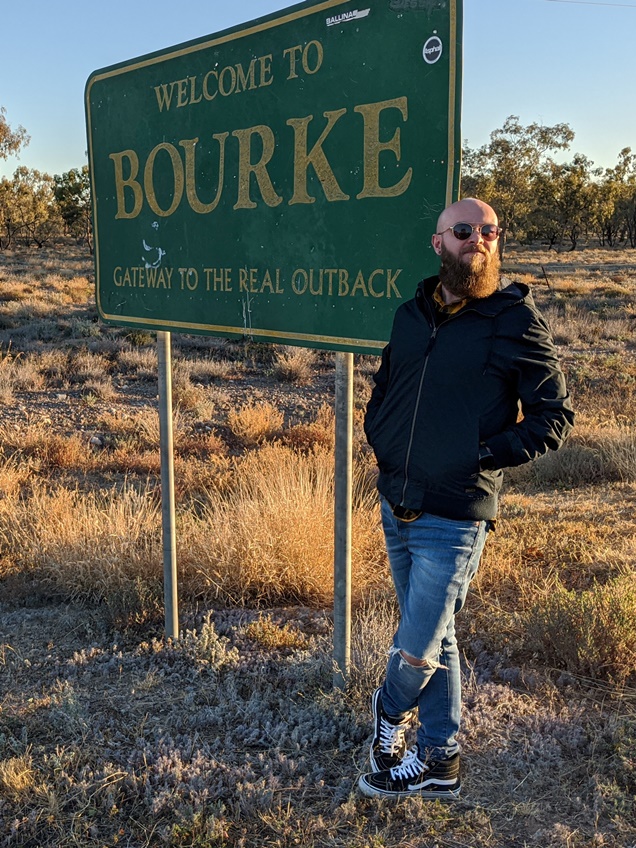
Roadside signage heralding our arrival in a new shire, town or region of the State: Gulgong, Gulargambone, Outback NSW region, Bourke.
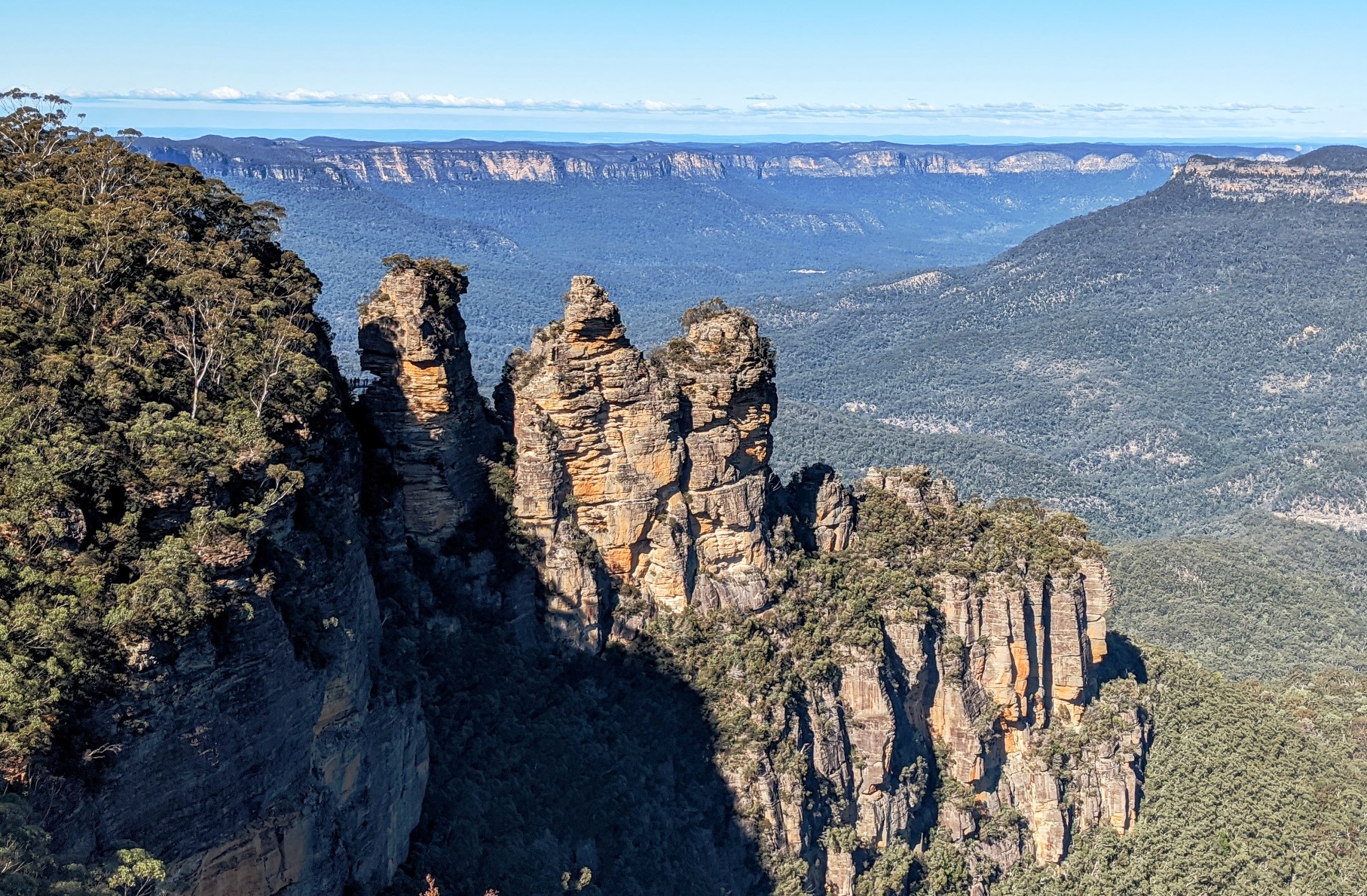
Katoomba: a brief pit-stop to see the Three Sisters.
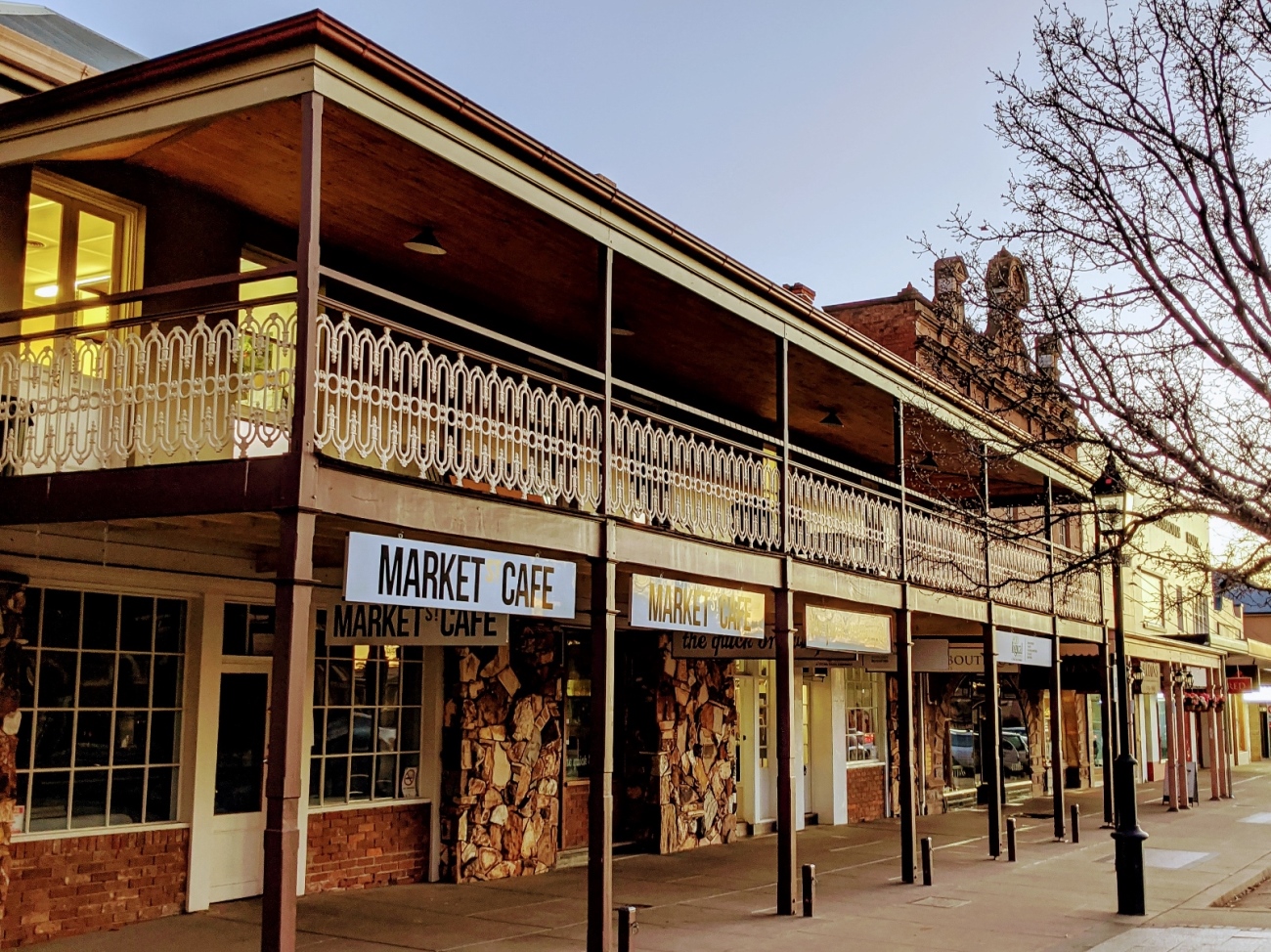
Mudgee: Wild West style of architecture at dusk.

Gulgong: am I on the set of a John Wayne film? Ride 'em cowboy!


Gulgong: this NSW Mid West town is a step back in time and, seemingly, a step into the United States' Wild West. Yee-Hah!
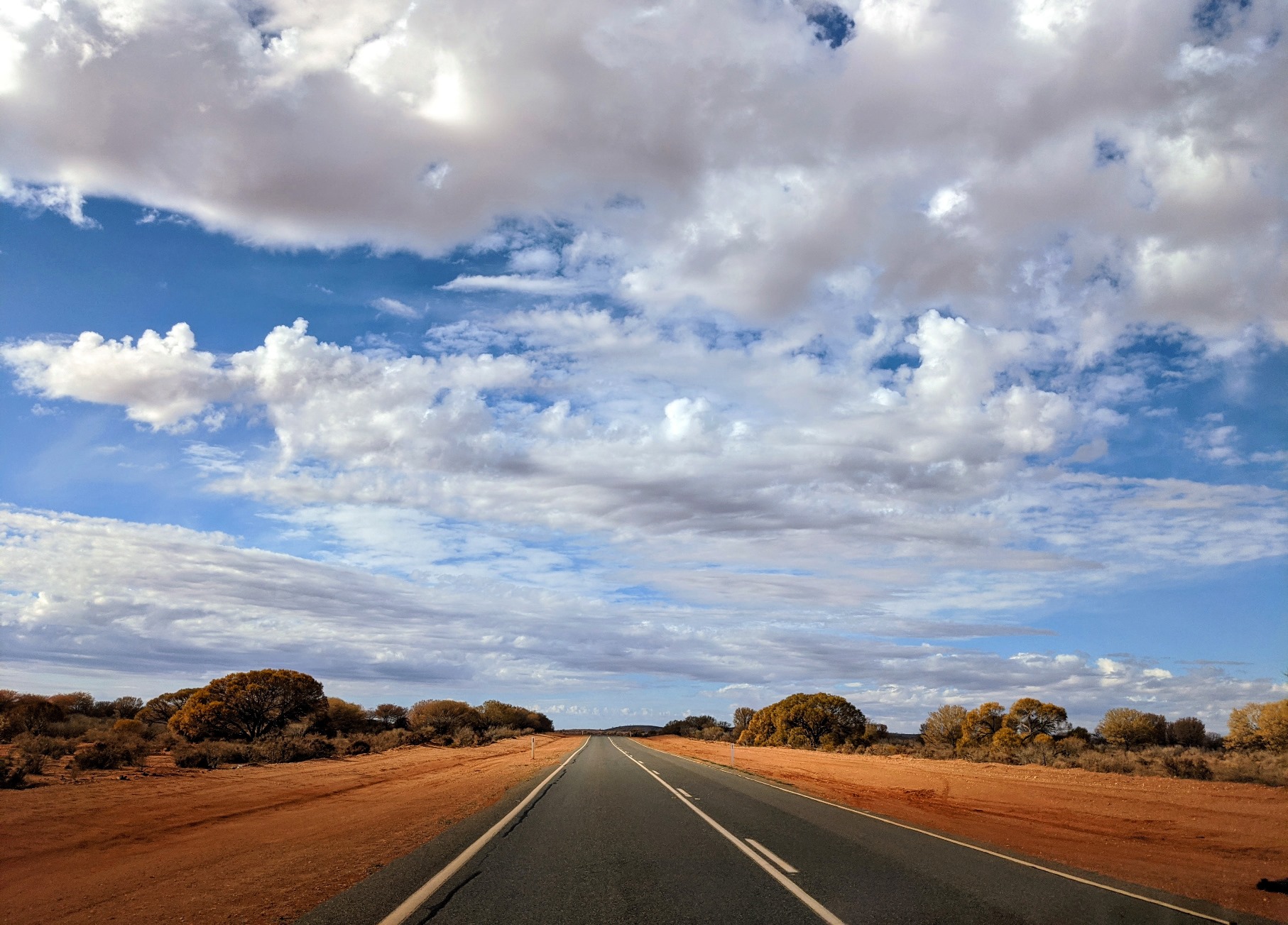
Between Gulgong and Dubbo: the kind of road trip vista which could grace the cover of any travel guide to Australia. The sky was huge.
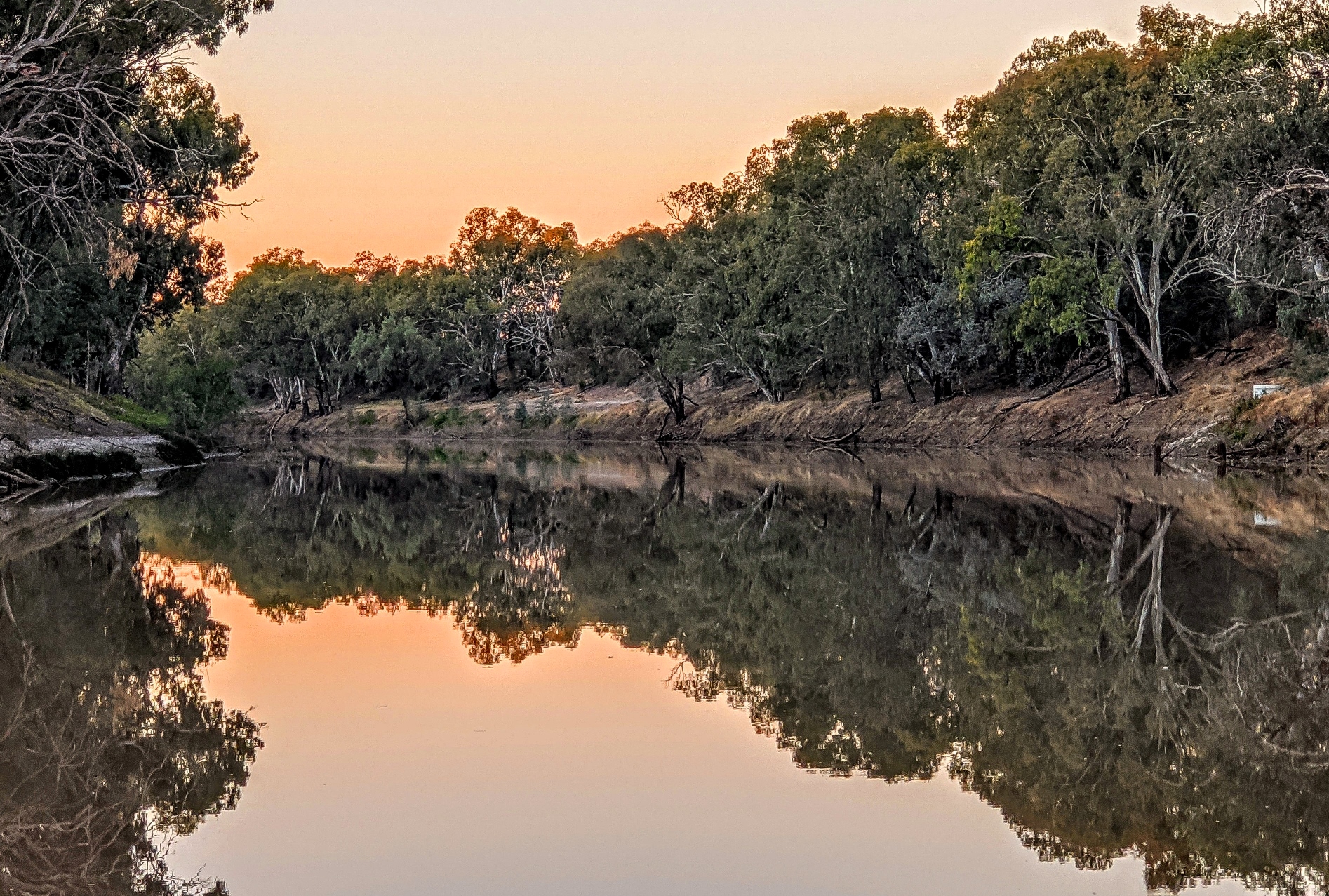
Bourke: reflections along the Darling River at dusk.
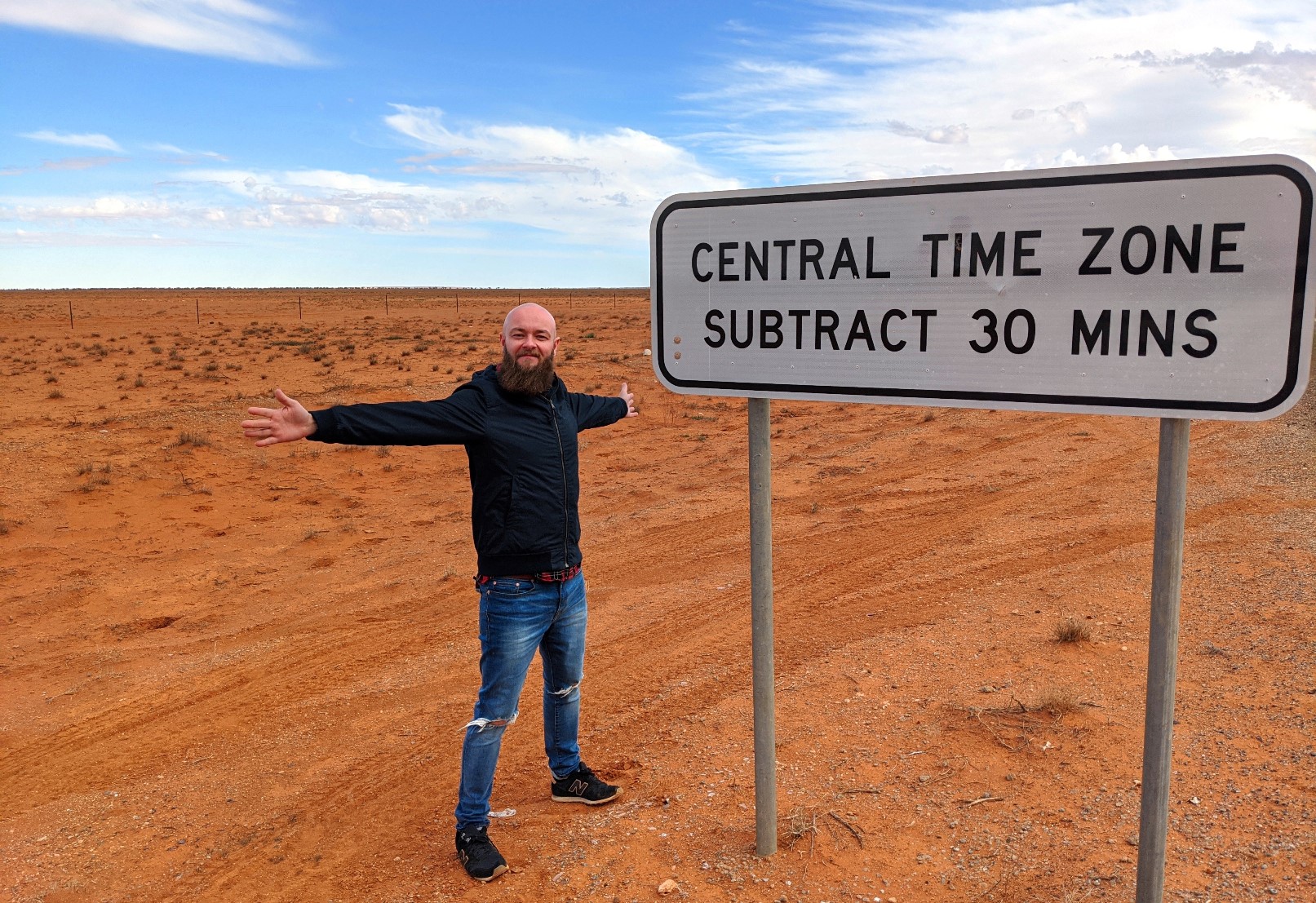
Broken Hill/Menindee: stood in two time zones simultaneously: Australian Central Standard Time (ACST) to my left, Australian Eastern Standard Time (AEST) to my right - a massive 30 minute differential.
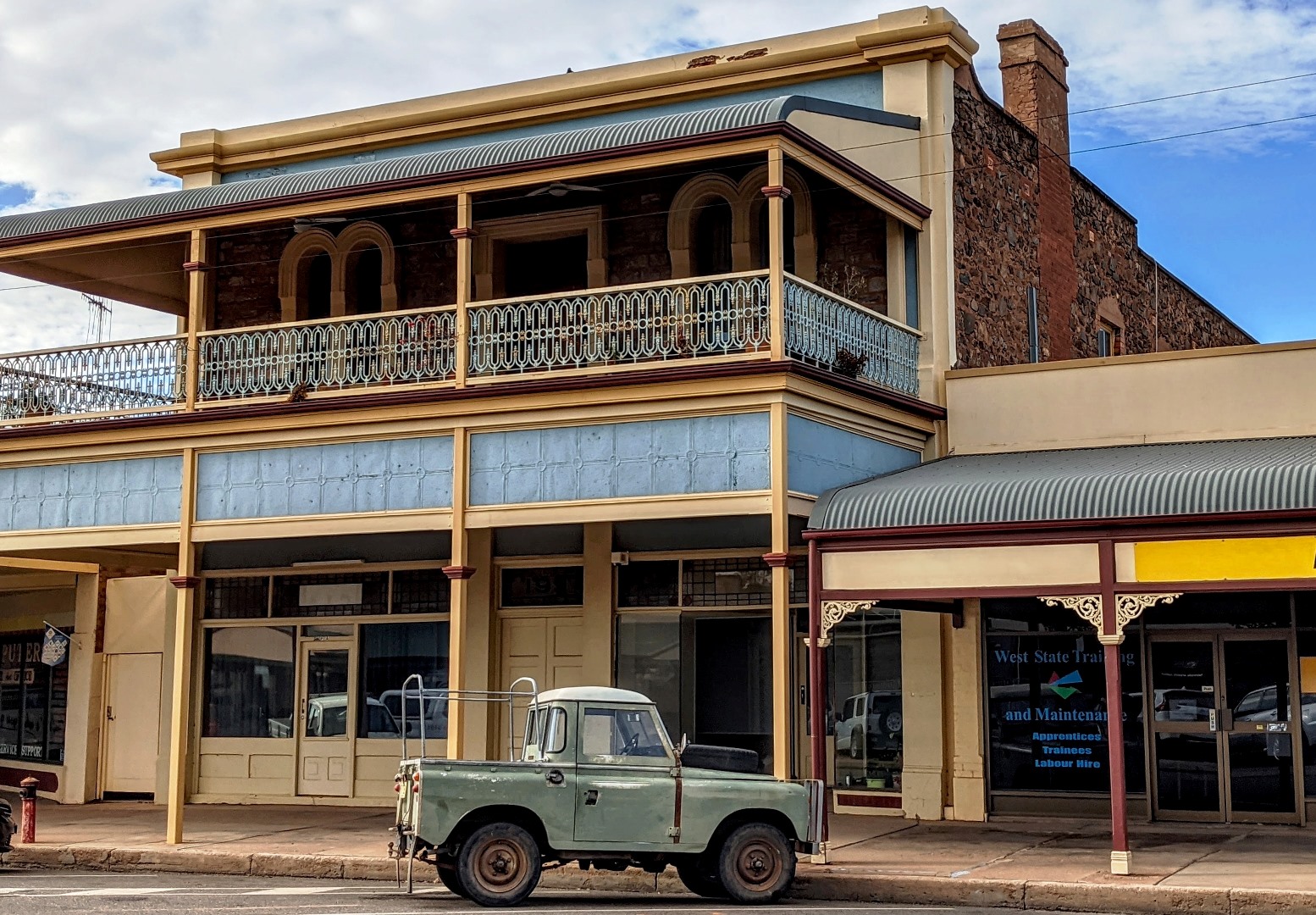
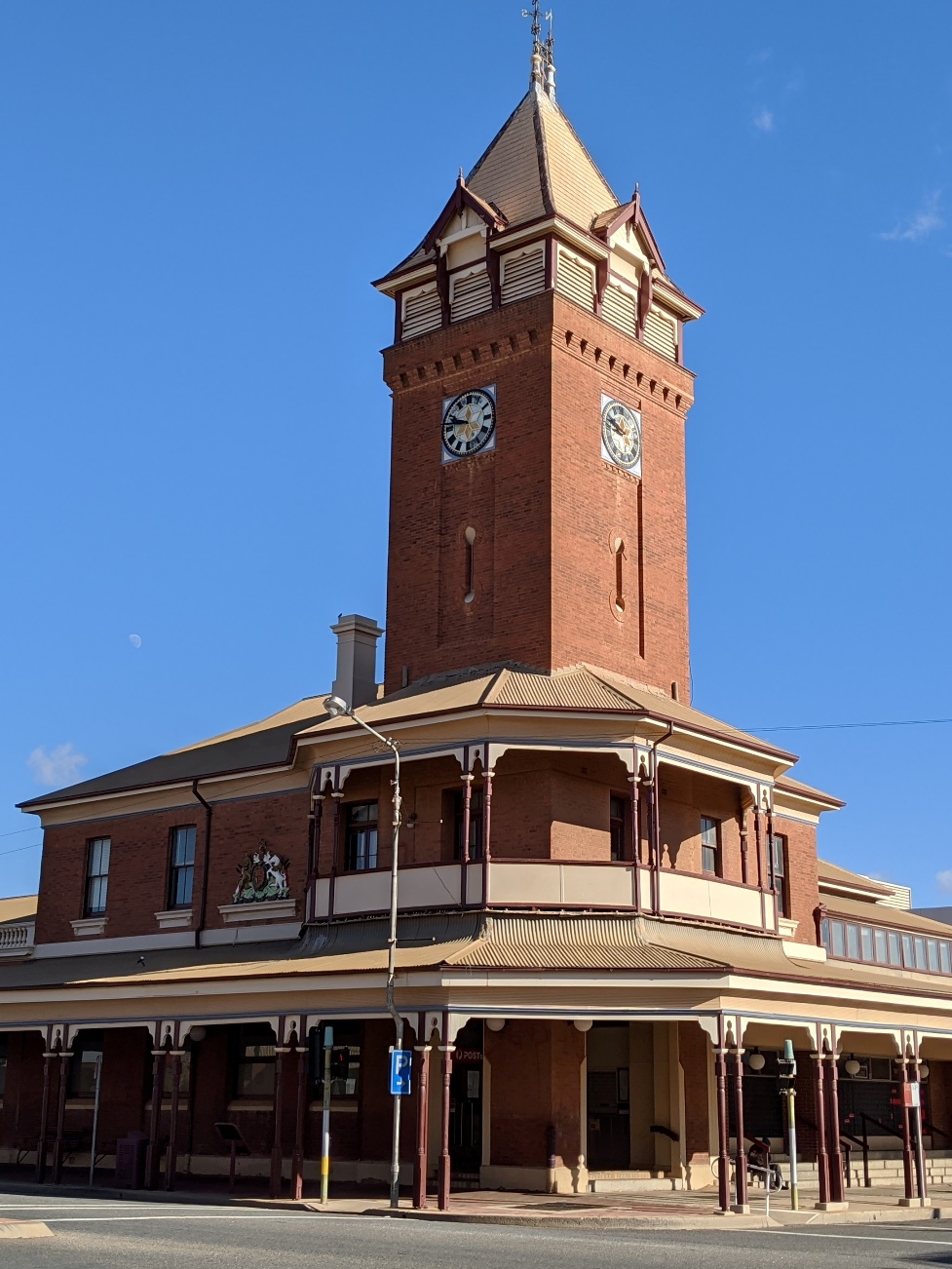
Broken Hill: I'm fascinated by Australia's cowboy architecture being, as it is, so distinct from anything I've seen before - and Broken Hill has some of the best examples.
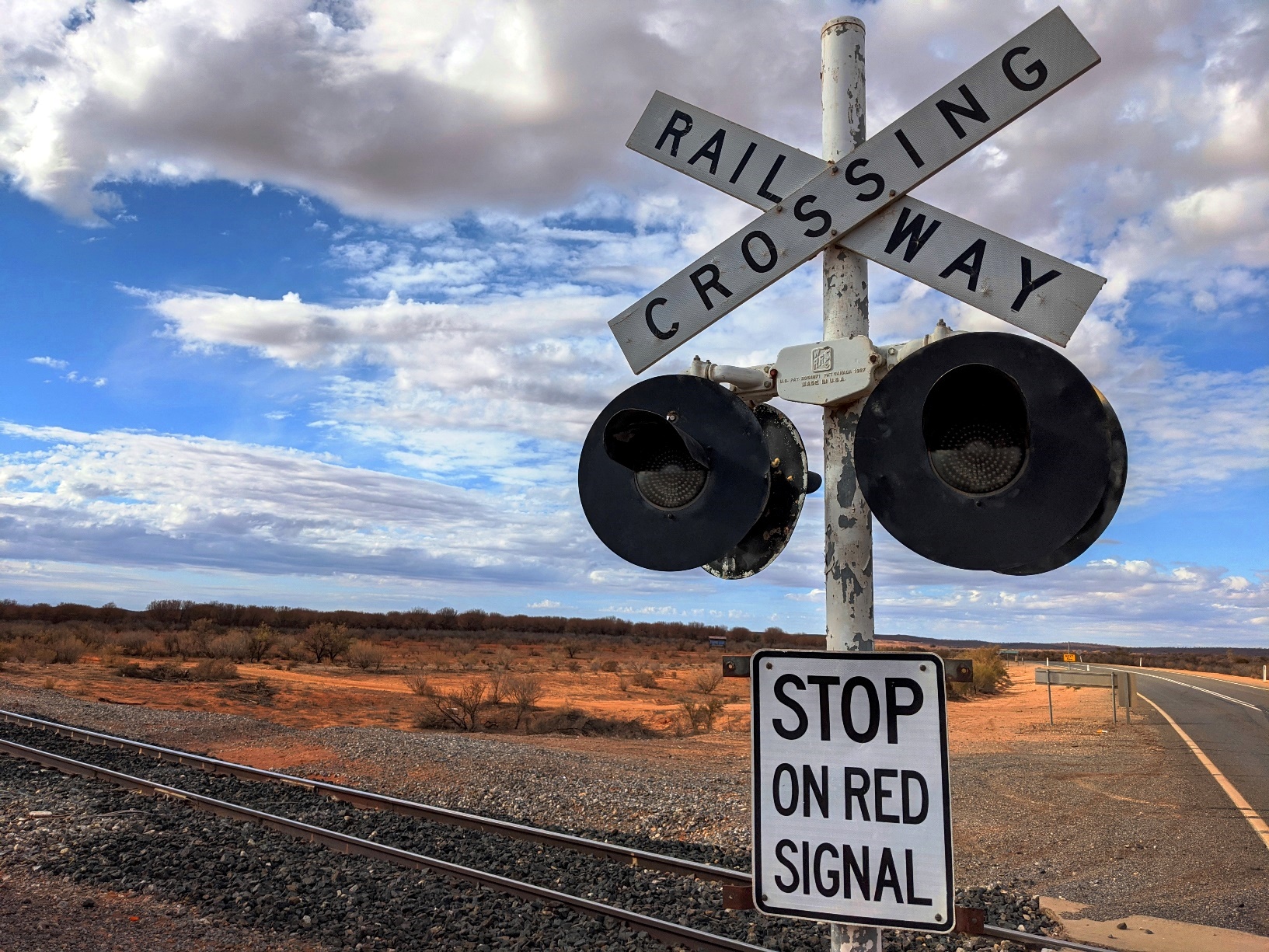
Broken Hill: evocative railway signalling just outside of Broken Hill on the road to Menindee.

Menindee: Menindee Lake, dry as a bone. Only these sculpturally dead trees and white shells remain. Positively lunar in appearance and just like walking on the moon.
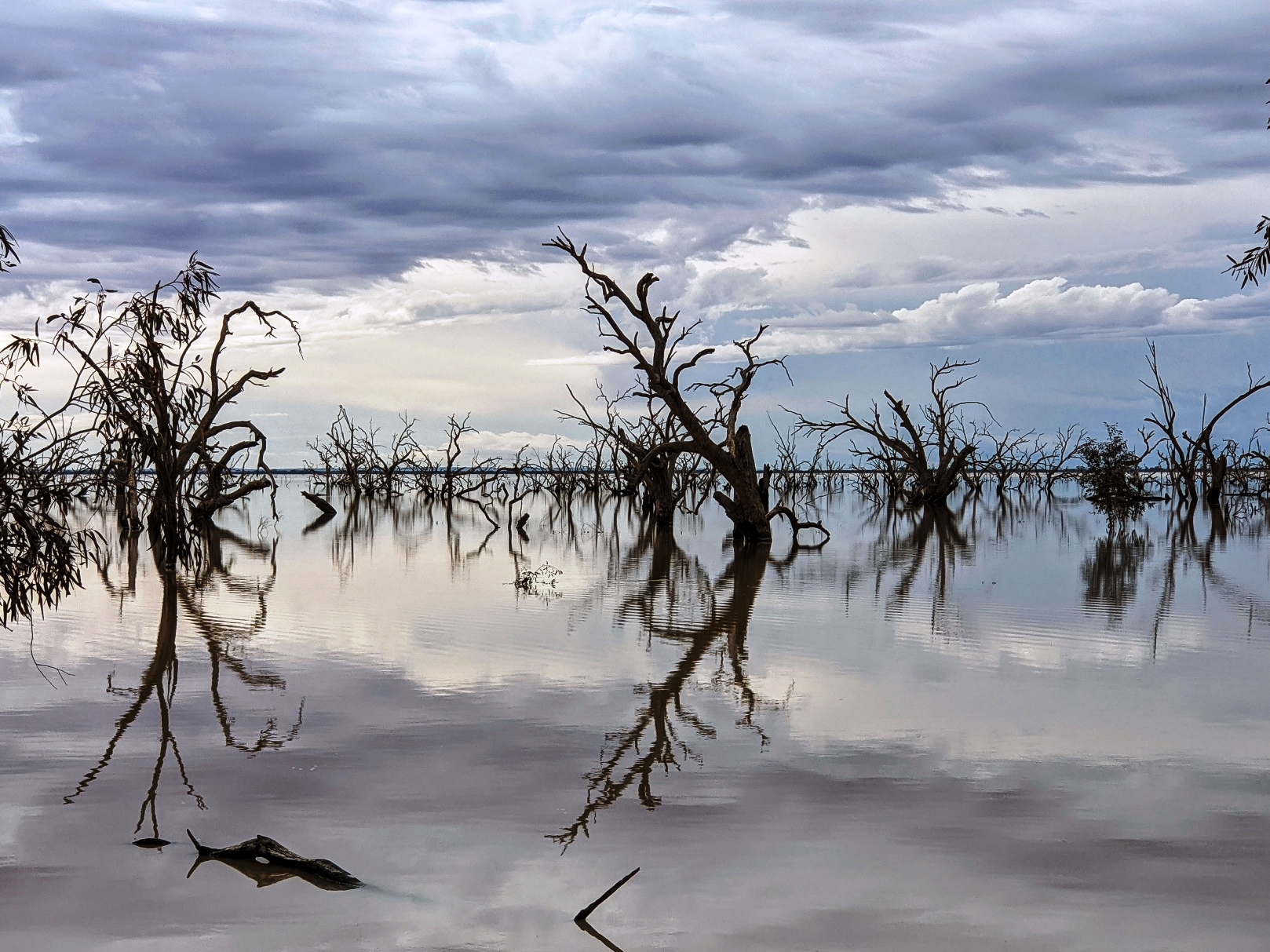
Menindee: the otherworldly Pamamaroo Lake. Australia. Is. Incredible.
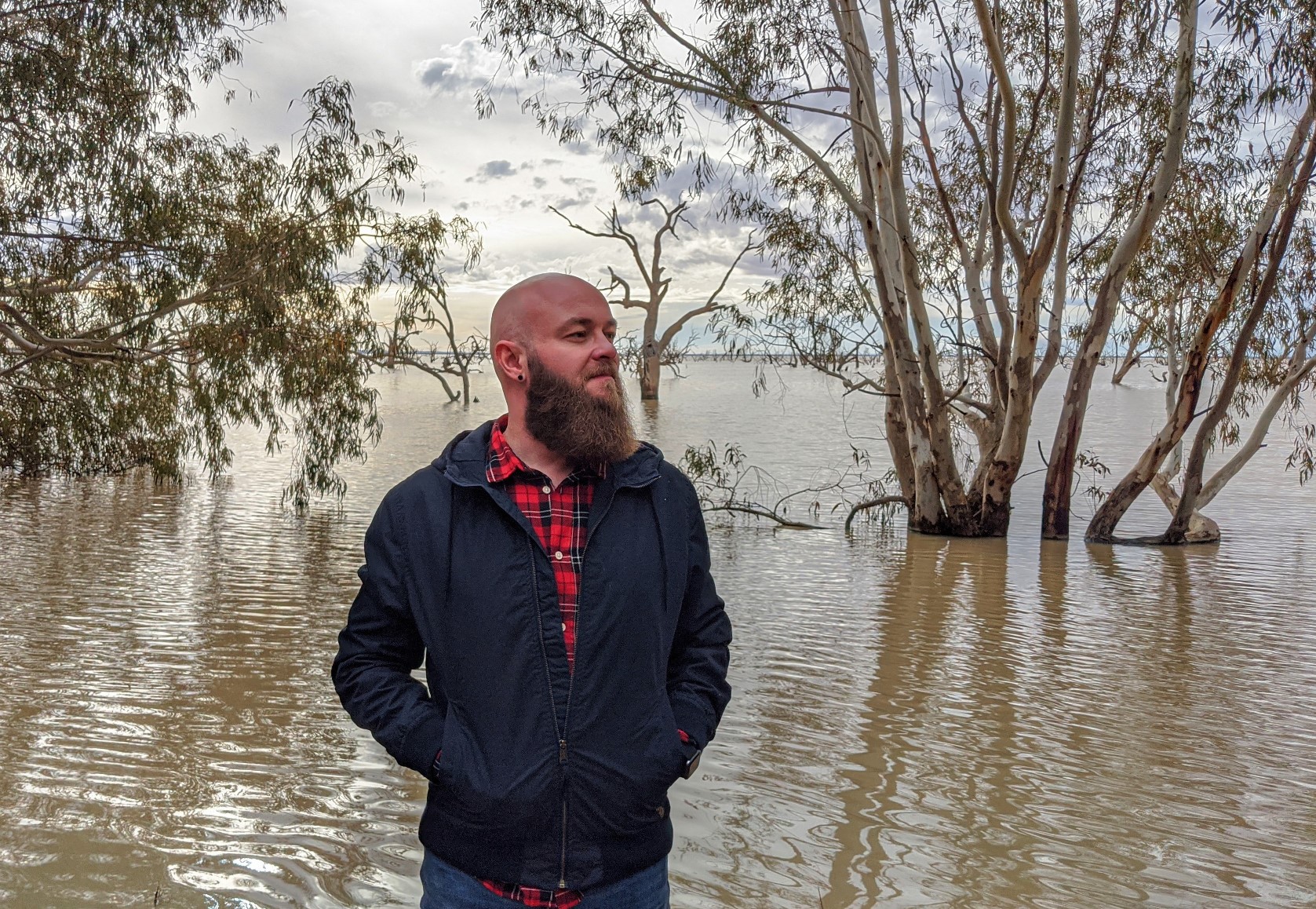
Menindee: as the wind picks up on Pamamaroo Lake the incredible reflections begin to dissipate.

Mungo: the incredible Walls of China, carved and sculpted over thousands of years by westerly winds.

Mungo: the Great Walls of China were certainly worth the 500km return trip from an Outback town to the middle of absolutely nowhere.

Mungo: a windmill silhouetted against the pastel sunset over Mungo, outside of Africa the oldest place to have been inhabited by humans since Ancient times.
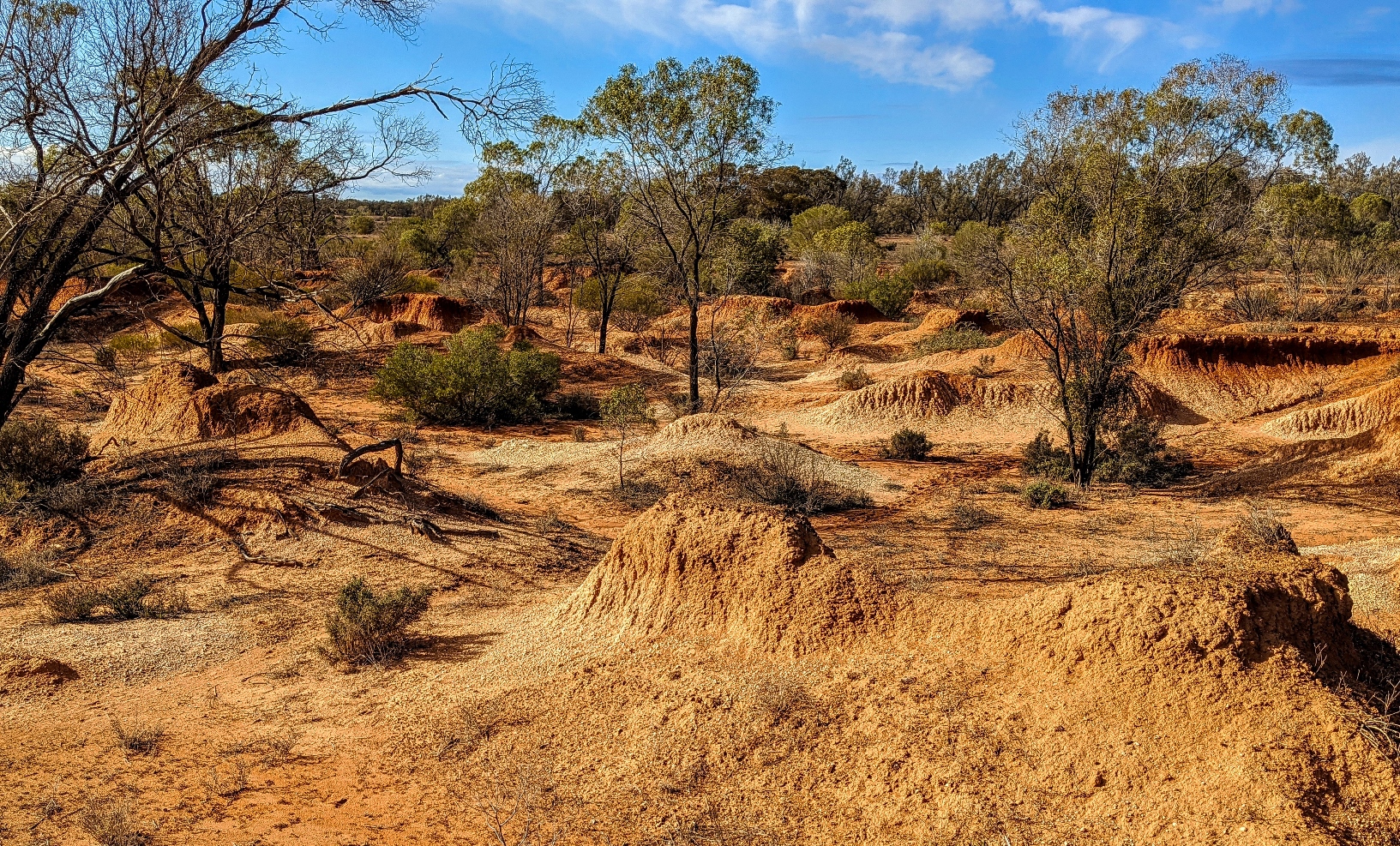
Mungo: the park's lumpy lunar landscape. Everything about this place says ancient.
travel tips, links & resources
- A road trip through any part of Australia is a chance to experience 'real Australia' outside of the generic state capitals. Little country towns offer the chance for an awesome coffee and tasty slice of banana bread. Pull over and support local Australia.
- Book your accommodation well in advance if you can. Australia is a land of trailer parks and camp sites and so if you're seeking something more luxurious do your planning early. In smaller towns motel rooms are quite basic but you can often expect tea and coffee making facilities as well as a microwave.
- Savour the Ride: try not to pack too much into your itinerary - much of your enjoyment will come from having the freedom to pull over and enjoy something you weren't expecting to see. It's a cliche but it's important to remember that the journey is also the destination!
- As with all walks in rural areas, be aware that you'll likely share your adventure with some poisonous creatures. Look where you tread. I very nearly put my hand on a nest of ants at Lake Pamamaroo.
- Road tripping is a quintessentially Australian pastime. Aside from flying, it is really the only practicable way of travelling around this giant scorched land. Incorporating a road trip element not only affords you a more grass roots experience, but you also have a chance of spotting the curiously large objects along roadsides, literally named 'Big Things'. Expect to see anything from giant bananas, to guitars, rocking horses and a crocodile wearing boxing gloves. It's a glimpse into the irreverent humour of the Aussies and part of the culture which has developed around hitting the open road.
- Check out Aussie Towns, a fabulous website which gives you a neat summary and a little background on almost every town in Australia sorted alphabetically.
- The journey we undertook crossed two time zones. At Broken Hill we needed to subtract half an hour from Sydney time (AEST) to be on local time. Bear this in mind - especially if you're catching something time dependent like a flight.
you may also like
